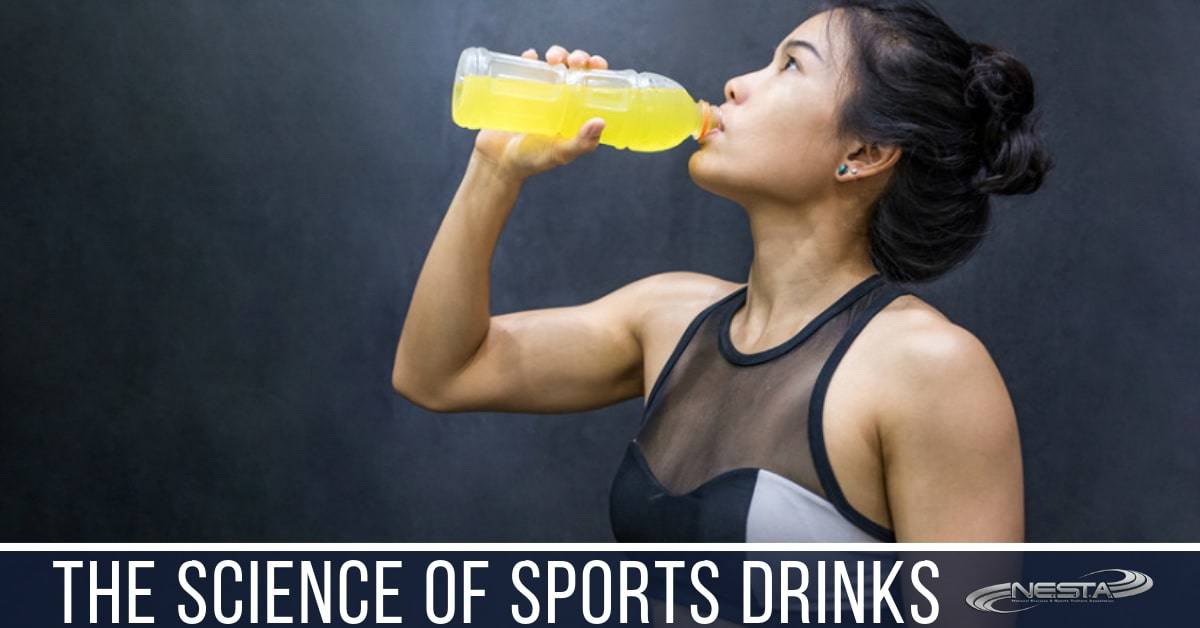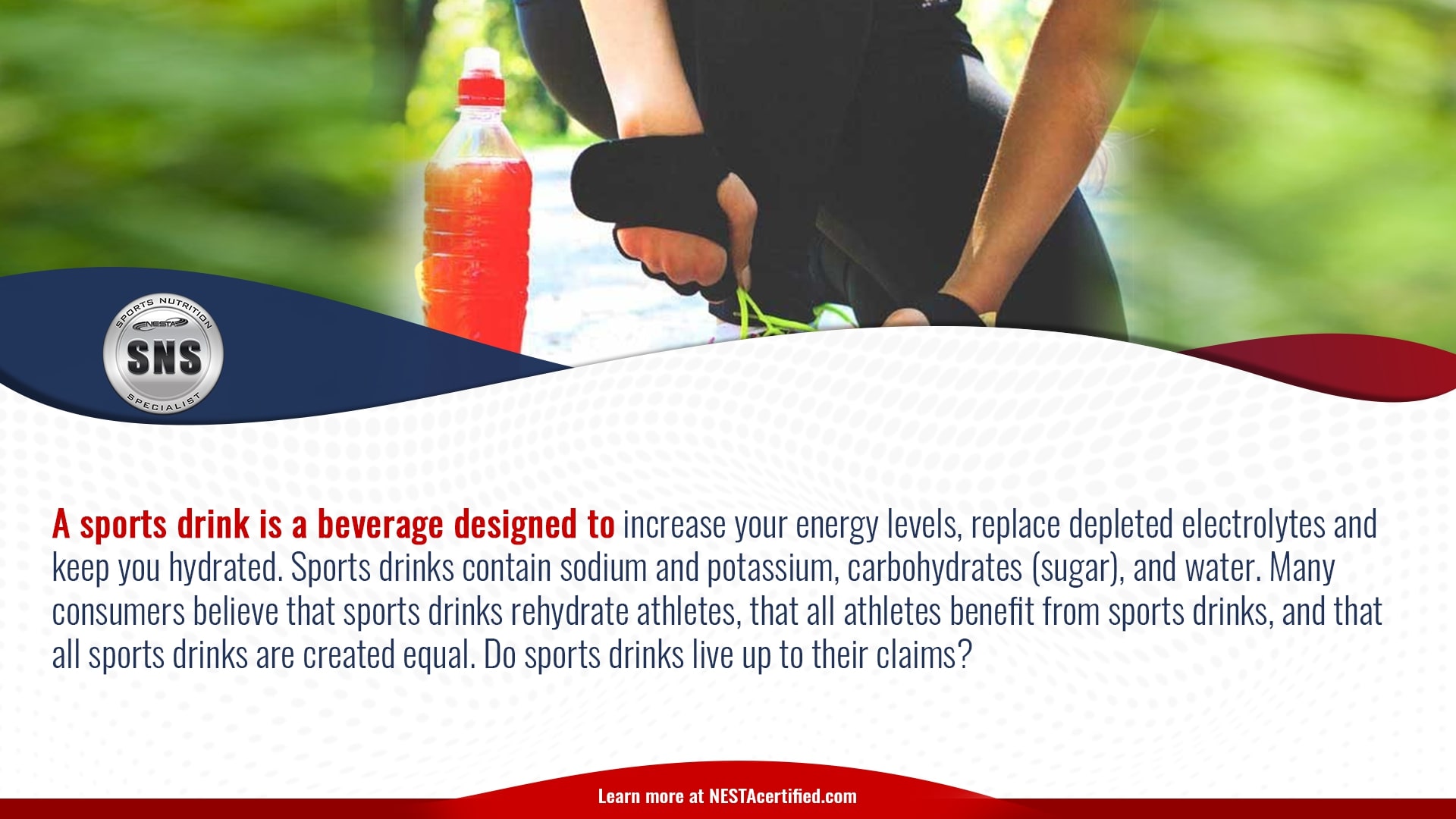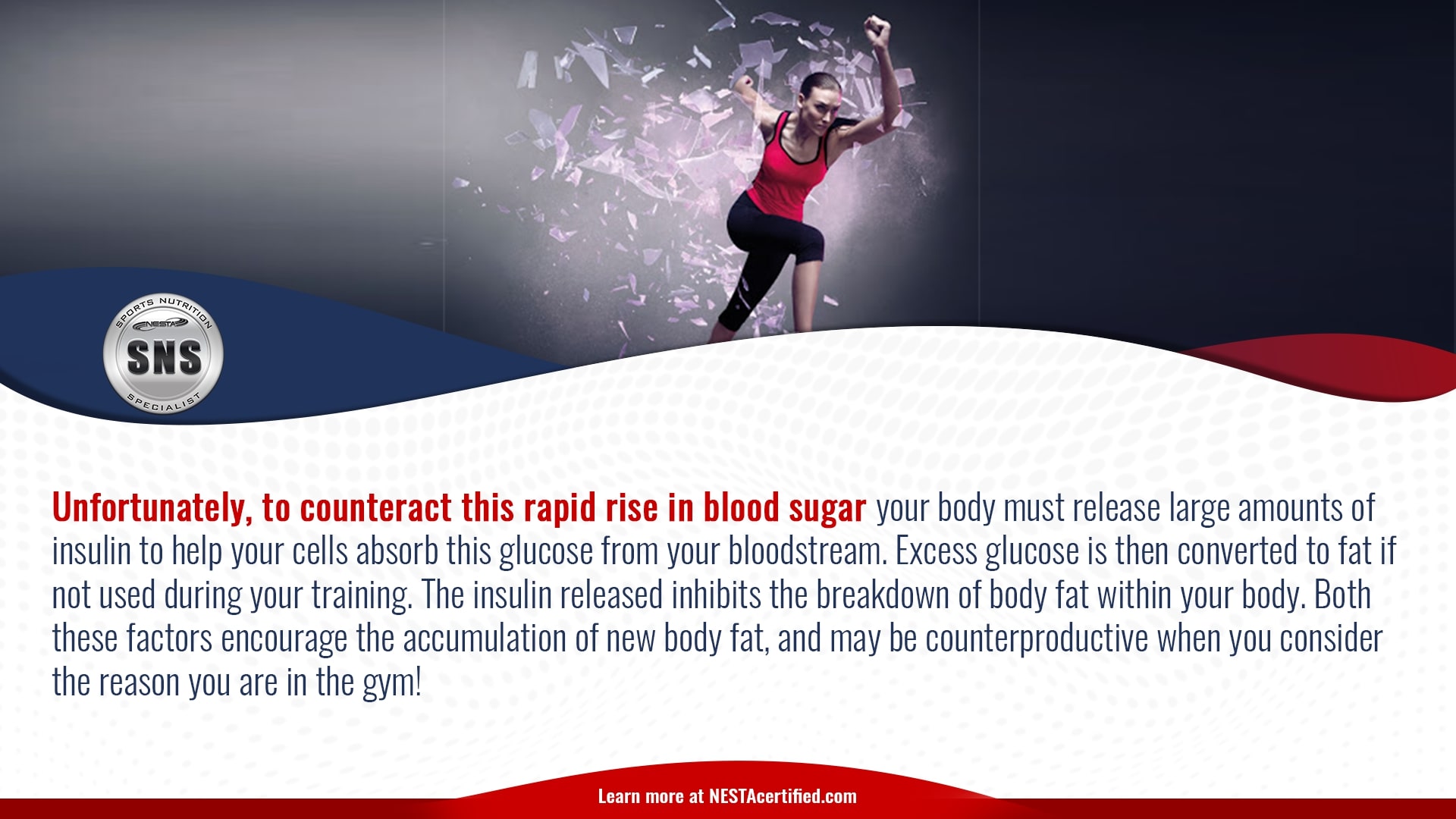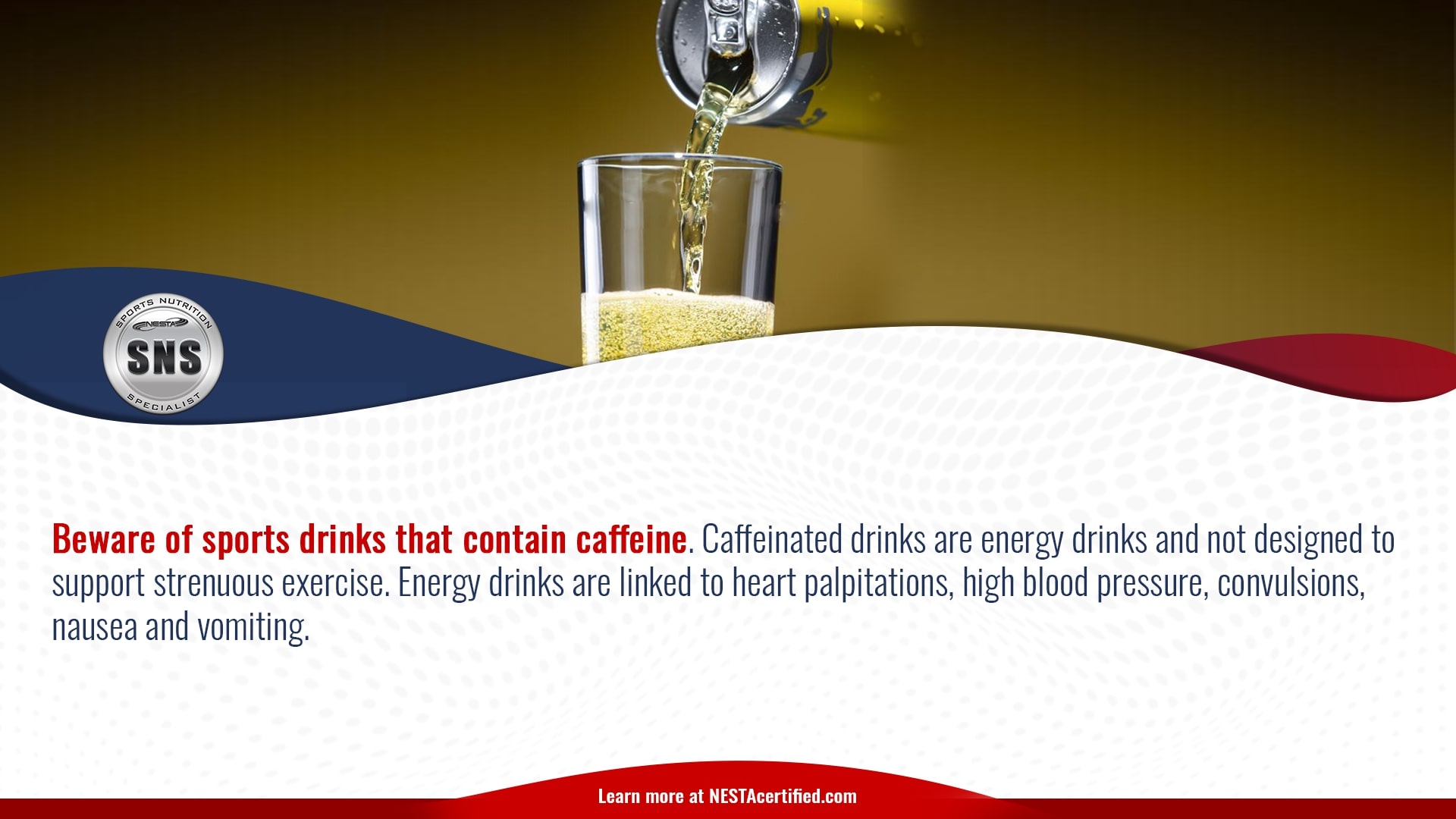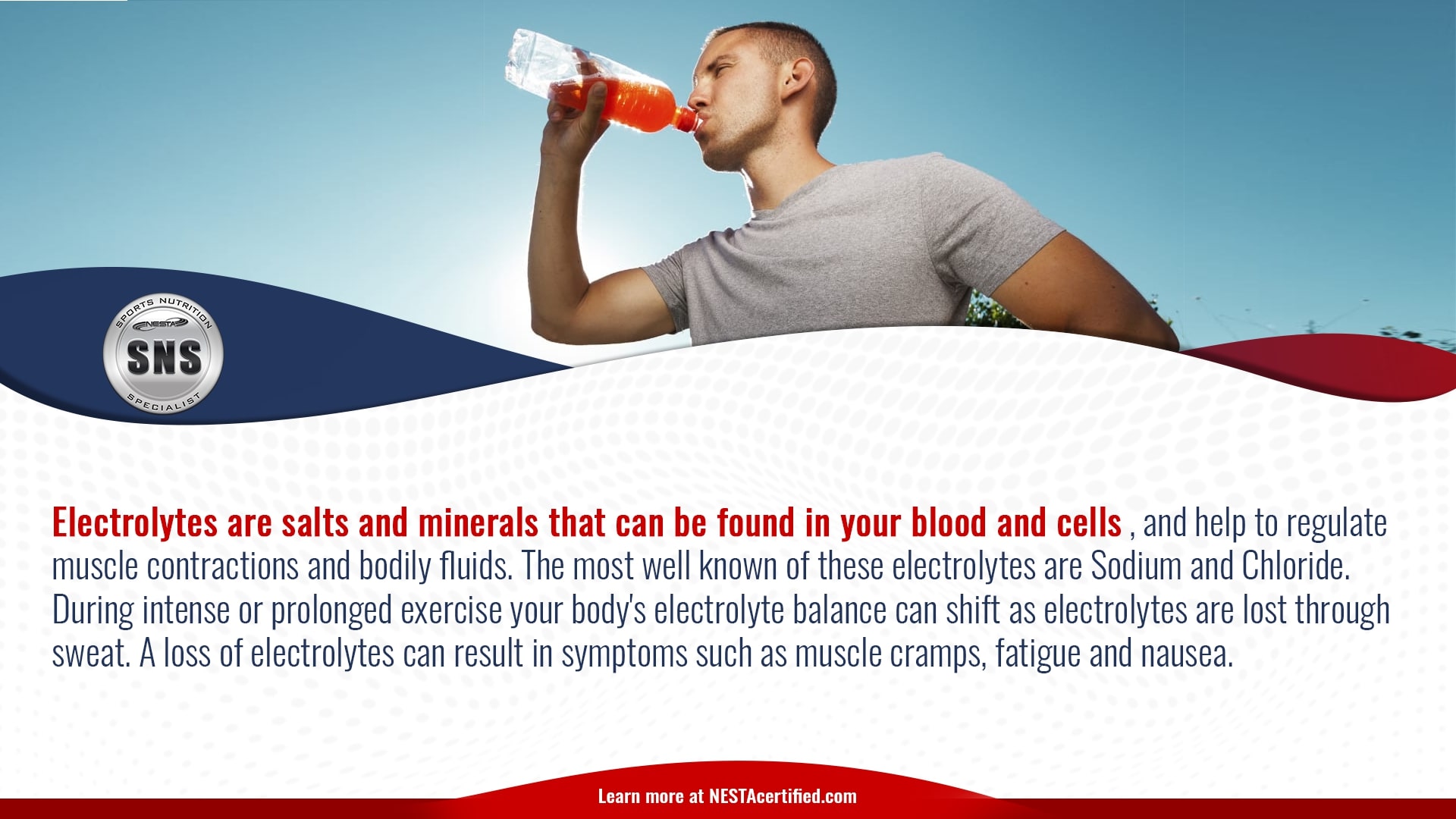The Science Of Sports Drinks
A sports drink is a beverage designed to increase your energy levels, replace depleted electrolytes and keep you hydrated. Sports drinks contain sodium and potassium, carbohydrates (sugar), and water.
Many consumers and coaches believe that sports drinks rehydrate athletes, that all athletes benefit from sports drinks, and that all sports drinks are created equal. As a professional Personal Fitness Trainer, or Certified Sports Nutrition Specialist you should know whether sports drinks live up to their claims.
Increase Energy Levels
Most popular sports drinks are full of sugar, as much as 20 teaspoons in a 500ml bottle. Your body converts this sugar into glucose which is quickly released into your bloodstream. This glucose is intended to provide your body with energy.
Unfortunately, to counteract this rapid rise in blood sugar your body must release large amounts of insulin to help your cells absorb this glucose from your bloodstream. Excess glucose is then converted to fat if not used during your training. The insulin released inhibits the breakdown of body fat within your body. Both these factors encourage the accumulation of new body fat, and may be counterproductive when you consider the reason you are in the gym!
Sports drinks were developed for endurance athletes, distance runners, triathletes, athletes who are on the court or field or train strenuously OVER an hour. The average person who visits the gym performs moderate intensity exercise for around 30 minutes and many sports drinks will add more calories than they burn. You can offset this calorie disadvantage by sipping your drink over the course of your entire workout or mix your sports drink with an equal part of water.
Beware of sports drinks that contain caffeine. Caffeinated drinks are energy drinks and not designed to support strenuous exercise. Energy drinks are linked to heart palpitations, high blood pressure, convulsions, nausea, and vomiting.
Replacing Electrolytes
Electrolytes are salts and minerals that can be found in your blood and cells, and help to regulate muscle contractions and bodily fluids. The most well known of these electrolytes are Sodium and Chloride. During intense or prolonged exercise your body’s electrolyte balance can shift as electrolytes are lost through sweat. A loss of electrolytes can result in symptoms such as muscle cramps, fatigue, and nausea. Again, this critical loss happens primarily with extended or endurance training, intense training over an hour or in hot, humid climates. Most trainees get a sufficient amount of electrolytes from their diets and don’t need additional electrolytes (especially sodium) to replenish those lost during their 30-minute workouts.
Hydration
Staying hydrated is an important part of any exercise routine, as your body loses water far more quickly than it loses electrolytes. Too little water can lead to dehydration which results in fatigue, muscle weakness, headaches, dizziness, and poor concentration. The best way to keep your body hydrated is to drink water and plenty of it. It’s free, contains no calories and has a multitude of benefits.
How You Can Help
If you are a personal trainer or specializing in nutrition, the Sports Nutrition Specialist program will complement your credentials. Learn cutting-edge techniques for increasing sports performance, reducing recovery time, and enhancing the overall well-being of your clients.
If you haven’t yet, be sure to check out what it takes to start a career in personal fitness training. This is your most affordable and fastest way to become a highly qualified personal trainer.
NESTA coaching programs are open to anyone with a desire to learn and help others. There are no prerequisites.
That’s it for now.
Take action!
PS: Click here to see many helpful business and career resources for trainers and coaches


